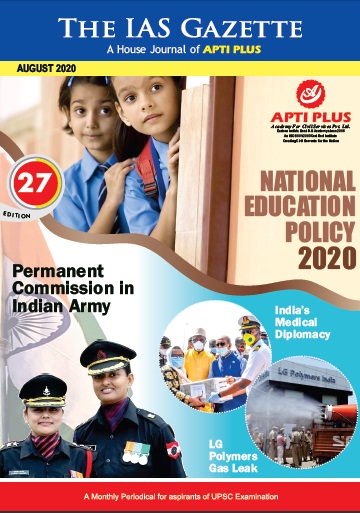




It is very important to analyze previous years’ question paper subject wise. It gives a 2-way benefit. On one hand, it gives you a very clear picture regarding the way UPSC thinks about the particular subject, while on the other hand, it makes you minutely strong on different subtopics on that subject. The rule is very simple, the more relevant and standard questions you face, the better your preparation will be.
Here, in this write up, I would like to go through the 2018 Preliminary (General Studies –I) question paper and analyze the ECONOMY Part.
Here I am taking Question Paper Booklet No: A with me. So Question Numbers may vary with other series.
Serial No |
Question Number |
Topic |
Static Portion Study |
1 |
3 |
Situation Assessment Survey of Agricultural Household by NSSO |
About NSSO and Ministry of Statistics and Programme Implementation |
2 |
6 |
Merchant Discount Rate |
About MDR |
3 |
8 |
Equalisation Levy |
a. All about Equalisation Levyb. Why is Equalisation Levy relevant in 2020 ? |
4 |
9 |
FRBM Review Committee Report |
Latest Development regarding FRBM |
5 |
10 |
Edible Oil Import |
a. All about Edible Oil Importb. All about India’s Import and Export |
|
|
15 |
ATMs |
a. Know RBI Guideline regarding ATMsb. Know About CATMi |
7 |
16 |
Capital Adequacy Ratio(CAR) |
RBI guidelines on CAR |
8 |
26 |
Geographical Indication (GI) |
a. GI TAG Indiab. WIPO Guideline on GI Tag.c. WIPO FAQ on GI Tag |
9 |
27 |
Coal Mine Auction |
a. Coal Mine Auctionb. Current List of Coal Mines for Auction. |
10 |
28 |
BHIM App |
a. All about BHIM Appb. National Payments Corporation of India (NPCI) |
11 |
30 |
ILO Convention 138 and 182 |
a. ILO Conventions ratified by India-2017b. ILO Conventions and Indiac. About ILO |
12 |
36 |
Digital India Plan |
All about Digital India |
13 |
46 |
Legal Tender Money |
RBI Guideline on Legal Tender Money |
14 |
47 |
Opportunity Cost |
a. All About Opportunity Costb. Opportunity Cost-NCERT |
15 |
48 |
Per Capita Real GNP and Economic Development |
a. GNP-NCERT.b. GNP and Economic Development |
16 |
49 |
Human Capital Formation |
Human Capital in India -NCERTConcept of Human Capital Formation |
17 |
50 |
Capital Formation in India |
Savings and Capital Formation in India |
18 |
56 |
Government Securities |
a. RBI FAQ |
19 |
63 |
GM Mustard |
a. About GM Mustardb. About GM Crops-FAOc. GM Crops and India. |
20 |
67 |
Solar Power Production in India |
a. Solar Power in Indiab. Renewable Energy in India. |
21 |
83 |
Green Economy |
a. Green Economy- UN.b. Green Economy India. |
22 |
96 |
Governance in Public Sector Banks |
a. RBI Paper.b. Capital Infusionc. Merger of Public Sector Banks |
So from the above table, we can see that a total of 20+ questions were asked from the Economy. Banking was very important along with Macro-economy.
The Macro-economy part could have been done with proper revision of NCERTs.
Questions were mainly conceptual type. So, the Static Portions are still relevant and well worth a revision.
The Cut-off marks in Preliminary Examination in the year 2018 was 98. 22 Questions from Economy section was indeed a deciding factor in the UPSC Preliminary Selection in 2018. Hence, it may be easily concluded that those who had their grip over ECONOMY sailed through while the others couldn’t make it last year.
This year again, with so many things happening around for the revival of Economy, it will remain as an important subject. Bank Mergers, Economic Stimulus, Economic Indices, GDP predictions, RBI Interventions, GST issues are all very much in news throughout the year. So gear up your preparation to give yourself a big chance to sail through the UPSC CSE Preliminary exam 2020.

© 2024 iasgyan. All right reserved